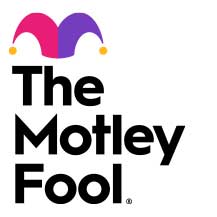Best IPO Stocks to Watch in 2021

Updated: Jan. 11, 2021, 11:49 a.m.
Almost every stock on the market today was an IPO stock at one point in its history.
The initial public offering (IPO) has long been the primary vehicle for companies entering the public markets. In this process, a privately held company declares its intention to go public by filing with the U.S. Securities and Exchange Commission (SEC). Over a period of several weeks, the company then works with underwriters to sell blocks of stock to institutional investors. Then, if everything goes well, the company and its underwriters set the IPO price, and the stock begins trading publicly on an exchange, with shares becoming available to regular retail investors like you and me.
The definition of an IPO is simple: An IPO stock is one that either recently went on the public market or is about to. Investors use the term to refer to any stock that is near its IPO date, generally up to one year after it goes public.
IPOs to watch in 2021
Following a halt early on in the COVID-19 pandemic, IPOs have come roaring back, and the market for new listings looks as hot as at any time in recent memory. As tech stocks have boomed, so have IPOs, with investors bidding up the share prices of many flashy debuts across the tech sector.
Among the recent IPOs to watch are the following:
- Airbnb (NASDAQ:ABNB): The home-sharing pioneer was in panic mode early in the pandemic, as global travel virtually ground to a halt. The company was forced to raise money at half its prior valuation and laid off nearly a quarter of its employees. However, business recovered quickly as guests looked to escape from cities and find long-term stays with more space. Airbnb hit the market in December 2020 and the stock more than doubled on opening day, reaching a $100 billion market value. As with companies like Zoom and Google, Airbnb’s name is a verb — a clear demonstration of its market power. As a disruptive leader in a massive industry, Airbnb is the definition of a hot IPO stock.
- DoorDash (NYSE:DASH): The leading food delivery app, which now claims 50% market share in the U.S., separated itself from the pack by focusing on increasing restaurant sales instead of cutting customer costs. The company developed technology for restaurants to use and made fast delivery a priority, ensuring that food arrived hot. Those efforts, along with a focus on the suburbs, help DoorDash win over big chain restaurants and explain why it’s the market leader today, having moved past Uber and Grubhub. Like Airbnb, DoorDash also soared on its December 2020 IPO, jumping 86% to a market cap of $72 billion. But the company received significant tailwinds from the coronavirus pandemic, and the stock’s future could be at risk once the crisis ends.
- Snowflake (NYSE:SNOW): The cloud-based data warehousing company has also turned heads on Wall Street following its September 2020 debut. Snowflake shares more than doubled on its opening day in a year when cloud stocks dazzled investors. Though the stock is pricey, Snowflake’s results speak for themselves. Revenue more than doubled in its third-quarter earnings report. Net revenue retention, a key metric in software-as-a-service stocks that measures growth from existing customers, jumped 162% — meaning revenue from existing customers rose 62%. Though Snowflake is still far from being profitable, the net revenue retention number may best explain why the stock trades at such a premium.
Upcoming IPOs in 2021
Here are some other big-name companies that are already making plans to go public in 2021:
- In December 2020, Robinhood, the app-based brokerage, reportedly hired Goldman Sachs to lead its IPO. The company has disrupted the online stock brokerage industry and seen interest surge during the trading bonanza that followed the market crash in 2020, which was a banner year for the company. In September 2020 it raised funding at an $11.7 billion valuation. According to Reuters, an IPO could value the company at more than $20 billion, though the timing and valuation are dependent on market conditions.
- Instacart, the leader in online grocery delivery, is also planning to go public in 2021, according to Reuters. A public debut has been on the horizon for a while as CEO Apoorva Mehta declared his intention to go public in September 2019. Instacart has seen a surge in interest during the pandemic, as grocery delivery has been in high demand, and the company raised $200 million at a $17.7 billion valuation in October. Like Robinhood, Instacart has also retained Goldman Sachs to lead the offering, and the IPO is expected to value the grocery delivery specialist at around $30 billion.
- The success of Match Group has proven the appeal of dating apps to the stock market, and now Bumble, which is best known for its dating app in which women make the first move, looks set to go public in 2021. Bumble would reportedly seek a valuation between $6 billion and $8 billion, and its IPO is being led by Goldman Sachs and Citigroup. The dating app is the second biggest (behind Tinder) and now has about 100 million users.
How to invest in IPOs
Retail investors generally can’t buy shares of a stock before it begins trading on an exchange. When a company is private, restrictions prevent most regular investors from accessing its stock. Even in the time leading up to an IPO, a company sells only a small percentage of its public stock, and there’s often more demand than supply, making it difficult for individual investors to get their hands on a stock before opening day.
But once the stock begins actively trading on public exchanges, buying shares becomes as easy as buying shares in any public company. Simply place an order with your brokerage. To see a list of recent and upcoming IPO stocks, you can visit Nasdaq’s IPO Calendar, which includes IPOs on both Nasdaq and the New York Stock Exchange.
That said, you should do research on the IPO stock that interests you before investing in it. Here are three important research steps to take:
Step 1: Read the S-1
Before deciding to invest in an IPO stock, it’s important to read through the company’s S-1 document, or prospectus. This document is filed with the SEC when the company decides to go public. It contains tons of useful information that isn’t often available publicly for private companies. The S-1 includes financial statements; management discussion and analysis; a description of the company, its business segments, and its history; and its growth opportunities and strategy.
Step 2: Consider the market
Within the S-1 document, look for details on a company’s total addressable market, or TAM. IPO stocks tend to be at the early stage of their life cycle. They are usually start-ups looking to get more funding and take more market share from industry incumbents. Therefore, they are almost always growth stocks, and often industry disruptors. That’s why they often explain their growth potential in terms of the total addressable market for their products or services, or how much consumers are already spending on those products and services.
Step 3: Review key metrics
When considering an investment in an IPO stock, you should also consider factors like revenue growth, profitability or profit potential, competitive advantages, and leadership, just as you would with any other stock. Look for signs that a stock has the potential to deliver long-term growth, like a history of high revenue growth, evident progress toward profitability (if the company isn’t already profitable), or signs of competitive advantages, such as barriers to entry or a disruptive innovation. To assess a company’s leadership, check out ratings and reviews on Glassdoor, as well as press coverage and interviews with leadership.
Why you should invest in initial public offerings
IPOs can be exciting for investors, offering the chance to get in on the ground floor of a stock. Since IPOs are almost always young companies at the beginning of their trading lives, they also have the potential to generate greater returns than any other kind of stock, especially those of more mature companies. For example, consider how much early investors made on stocks like Home Depot (NYSE:HD), Amazon (NASDAQ:AMZN), and Starbucks (NASDAQ:SBUX). Some stocks like these have even turned $1,000 into $1 million.
That said, not every IPO is a good investment. The hype around IPO stocks can distract even experienced investors from a company’s overall health — and even promising ideas can struggle on the public markets.
While it’s true that most IPOs underperform the market, the windfall from a big winner can more than make up for several losers. Not every IPO is going to be the next Amazon, but by following the steps above, you stand a better chance of finding high-quality stocks that can last past the initial hype cycle and give you the greatest chance to beat the market.



